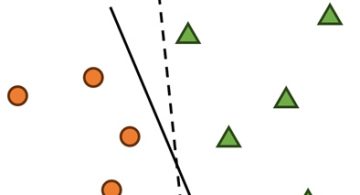ギーク
Gastrophysics: The New Science of Eating
Veronica
As part of working on a food-related project, I studied the book «Gastrophysics. The New Science of Eating» by Oxford professor Charles Spence.
I highly recommend reading this book. Gastrophysics is a fascinating topic, and I want to share some interesting findings from this book.
So, what is Gastrophysics? Gastrophysics can be defined as the scientific study of those factors that influence our multisensory experience while tasting food and drinks.
But first, let’s think about a perfect meal itself. In 1894 French chemist Berthelot was contemplating about what a meal would look like at the end of the XX century. The idea of sitting at the table and wasting an hour of one’s day with a multi-course meal seemed bizarre to him. He wrote: «Surely in the future people will have a pill to pop, and that will sustain them through the day and will not need anything else.»
Arthur Bird followed his idea in 1899 and wrote in his book «Looking forward a dream of the United States of the Americans in 1999».
In his words: «In order to save time people in 1999, often dined on a pill, a small pellet which contained highly nutritious food. The busy man of 1999 took a soup pill or a concentrated meat pill for his noonday lunch. He dispatched these while working at his desk. So, he could be more efficient as a result.»
That’s how people thought about what was going to happen in 1999, but it didn’t. It turns out that food is much more than just about nutrition and efficiency. There is a whole sort of psychology behind our experience of food, the way we eat, and what we enjoy eating.
Prof. Charles Spence is an experimental psychologist at the University of Oxford. He is the head of the Crossmodal Research Laboratory, and he studies how our brains process and integrate the information from each of our senses. Also, he consults many multinational companies on various aspects of multisensory design.
Professor Spence also wrote several other books and the book «Gastrophysics» translated in Japanese.
The food itself is not the only essential ingredient of our dining experience. Our mood and emotions are significant factors, too, and it is better to optimize them. Next is a real-life example.
The chef from Switzerland tried hard to prepare the best dishes but realized that some of his guests were not enjoying the food as much as he thought they should. He noticed that people looked grim or upset when entering the restaurant. With this mood, how could they enjoy the food? The solution was simple: to put a cow on each table.
Imagine one evening at the restaurant. Customers walked in, placed the order, and started waiting for the food. Nothing was happening until one of the guests became curious about the cow on the table. They picked it up to check if it was a salt or pepper shaker. And unexpectedly it produced «Mooo» sound. A guest started laughing in surprise. Then, within a few moments, other guests started picking up the cow and smile. Mission accomplished: guests’ mood is lifted and the food can be served.
The other important aspect is taste. We all know the basic tastes: sweet, sour, bitter, salty, and umami. Umami (delicious taste) was discovered by a Japanese researcher Kikunae Ikeda in 1908.
The mistake that many people make when asked about tastes is to mention things like fruity, meaty, herbal, citrusy, smoky, etc. But these are not tastes, they’re flavors. How to recognize the difference? Hold the nose closed, and what is left is taste.
You have probably heard about tongue map and almost every textbook published in the last 75 years mentions it. The basic idea is that we feel different tastes with different parts of our tongue. But Charles Spence claims that our tongue doesn’t work like that: each taste receptor on our tongue is responsive to all five tastes.
The real question, though, is what creates the taste. The answer lays not only in our mouth but also in our mind! Our mind creates the expectations of what something should taste. And those expectations are influenced by many factors, such as naming, pricing, branding, and others. In one experiment, researchers asked people to evaluate wine and intentionally showed people the prices. They found that most people reported that they liked more those wines that were shown as more expensive (even when the researchers swapped the prices).
The other example is about naming. You came to a restaurant and want to order fish. Suppose you saw Patagonian Toothfish on the menu. Would you order it? The author says: No. Sales of this «monster of the deep» had been disappointing for years. No matter how chefs prepared it, customers just turned their noses up and chose something else instead.
But if you saw the Chilean Sea Bass name on the menu, would you order it? It certainly sounds a lot more appealing. The thing is, though, that these two names refer to the same fish! Sales of this currently sustainable fish have increased by over 1,000%. The trick was simple: just change the name.
Philosopher Apicius once said: «The first taste is always with the eyes.» Nowadays, the visual appearance of a dish is just as important as, if not more than, the taste or flavor itself. We see food images everywhere, from advertisements, social media to TV shows.
We never think about the color of a plate, but it influences the taste too. Absolutely the same chocolate mousse was reported to taste 7% sweeter, and 13% more flavorful on the white plate compared to be served on black. But it’s the same food. But black color changes the tasting experience and the expectation.
National Health Service (NHS )in the UK noticed that older people with Alzheimer disease didn’t eat enough food. As a result, they didn’t get sufficient nutrition and had to stay longer in the hospital. What could the administration do without investing a lot of money into new recipes and hiring more professional chefs? By suggestions from scientists, the administration decided to change plates color from white to blue. And it helped! Elderly patients started to eat nearly 30% more.
Sound also makes a lot of difference. Not only the background sound in the restaurant during the meal but also the sound of eating itself.
Dr. Spence himself did the experiment that made him famous. Together with other researchers, he tried to find out if changing the sound when you bite food influences your perception of its taste. The scientists chose Pringles for experiments and recruited participants to eat chips and to evaluate freshness and crispness while wearing the headphones. With each bite, the researchers modified the sound volume or frequency. When the biting sound was louder or higher frequency, the participants reported that chips were significantly fresher and crisper. But in reality, they always had the chips from the same pack.
I have some aviation background, and I liked reading the chapter about airline food. These days, planes are pressurized to create an atmosphere that is equivalent to an altitude of approximately 6,000–8,000 feet above sea level. Noise in the cabin is around 80 – 85 dB, and the humidity is very low (below 20%). Under such conditions, it becomes harder to taste sweet, sour, salty, and bitter. No wonder that airline food tastes so bad. They put a lot of salt to make it «tastier.»
Digital technologies surround us and change the food landscape. Modern technologies create more opportunities to deliver a more fabulous experience for customers. Andreas Caminada from Switzerland is the youngest three-star chef in Europe. He uses tablets instead of plates in his Michelin star restaurant. The tablets are waterproof and dishwasher safe. Other restaurants and chefs go even further: they use virtual reality experience, vibrating forks, digital flavor delivery, robots, and more.
I hope you’ve got interested in Gastrophysics now. If you read the book, you will find more compelling examples.
Bon appetite!


 2024/05/17
2024/05/17 2024/01/05
2024/01/05 2023/12/08
2023/12/08 2023/11/17
2023/11/17 2023/07/07
2023/07/07 2023/05/12
2023/05/12 2023/02/24
2023/02/24 2022/12/23
2022/12/23